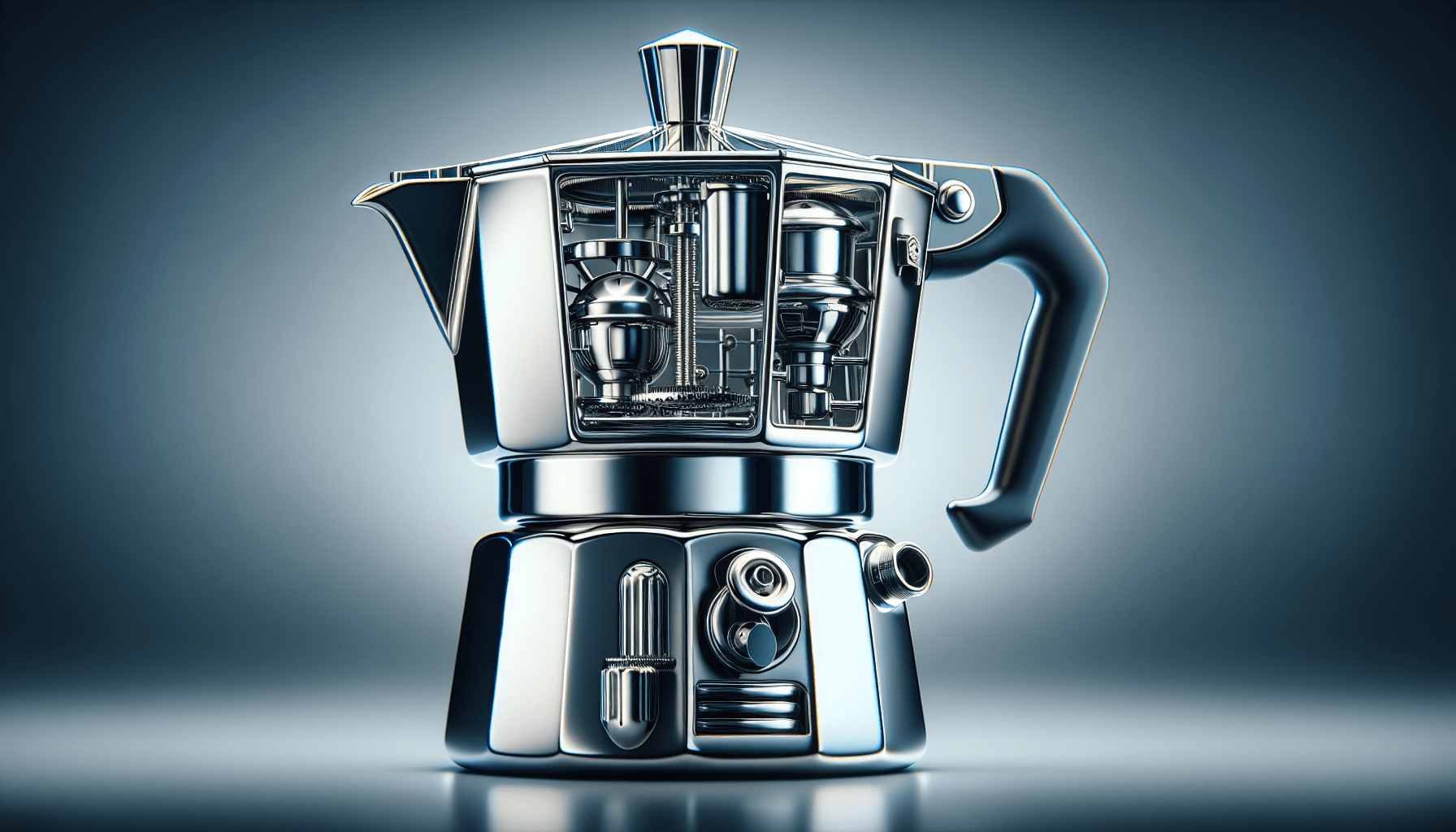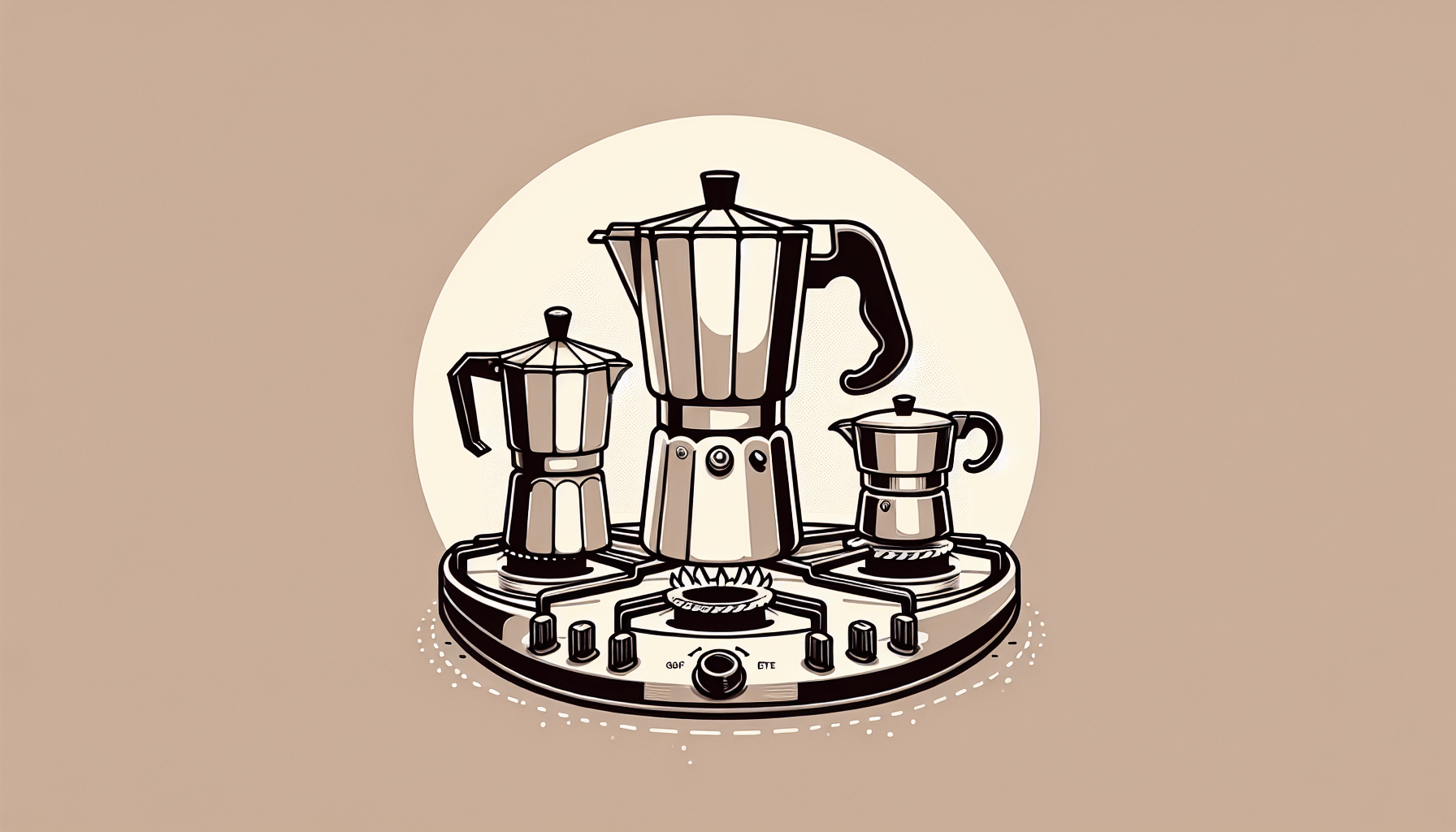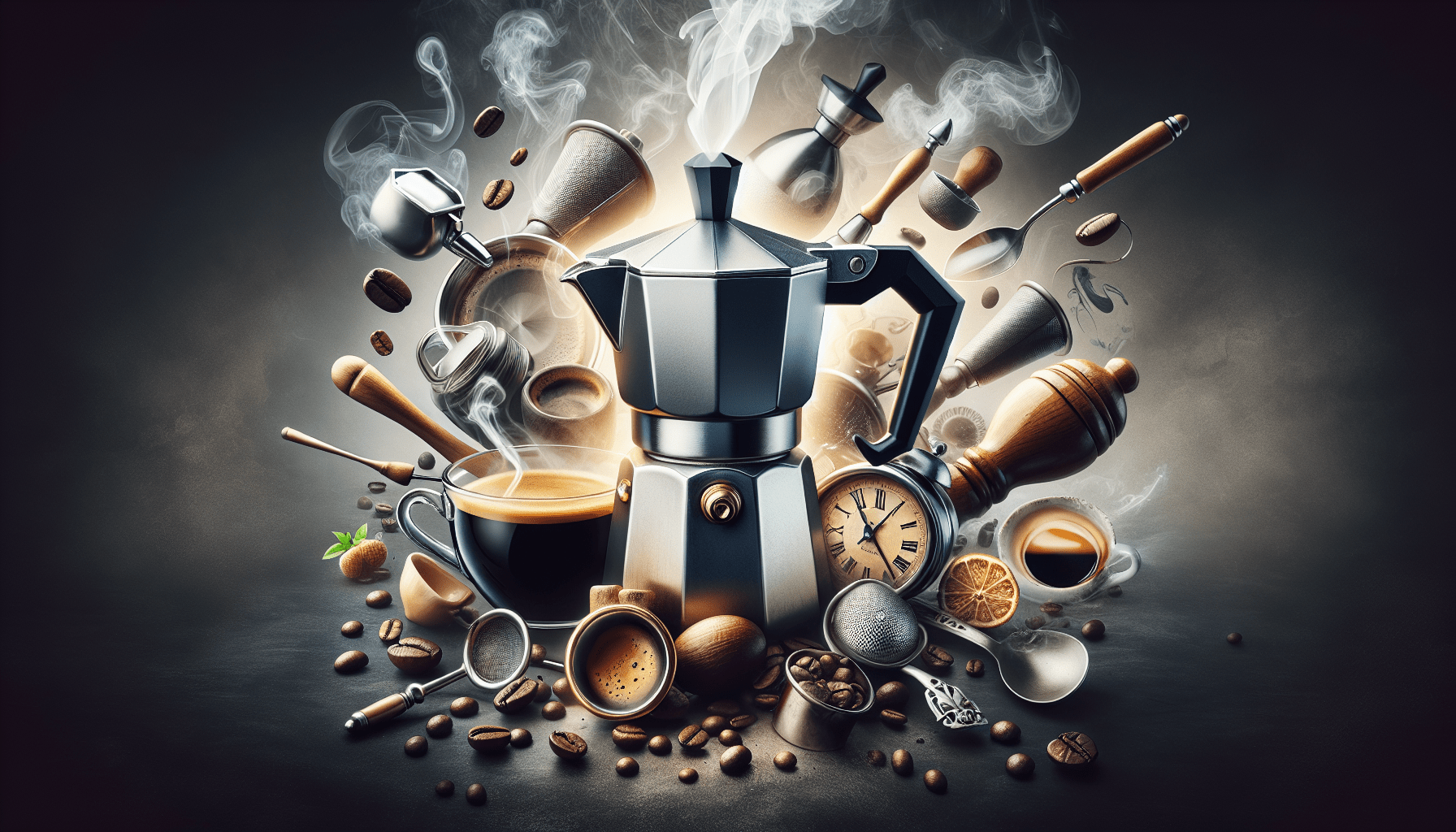Have you ever wondered how those sleek stovetop espresso makers work their magic in brewing that perfect cup of espresso? Well, wonder no more! In this article, we will unveil the inner workings of a stovetop espresso maker, explaining the step-by-step process that occurs inside this ingenious appliance. From the tightly packed coffee grounds to the pressurized boiling water, you will be amazed by the artistry behind each aromatic cup of espresso it produces. So, dear reader, join us as we delve into the fascinating world of stovetop espresso makers and discover the secrets behind their delightful brews.
Stovetop Espresso Maker Overview
A stovetop espresso maker, also known as a moka pot, is a small and portable device that allows you to brew strong and flavorful espresso-like coffee on your stovetop. It consists of several parts that work together to produce a rich and aromatic cup of coffee.
Parts of a Stovetop Espresso Maker
The main components of a stovetop espresso maker include:
-
Water Chamber: This is the bottom part of the espresso maker where you fill water. It has a pressure release valve to ensure safety during the brewing process.
-
Filter Funnel: The filter funnel sits on top of the water chamber and holds the ground coffee. It has several small holes that allow the brewed coffee to pass through.
-
Gasket and Filter Plate: The gasket and filter plate create a seal between the water chamber and the filter funnel. They prevent any water or coffee grounds from leaking.
-
Upper Chamber: The upper chamber is where the brewed coffee collects. It has a spout that allows you to pour the coffee into your cup.
Working Principle
The stovetop espresso maker works based on a simple yet effective principle. As heat is applied to the water chamber, the water starts boiling and creating steam. This steam builds up pressure and forces the hot water to rise through the filter funnel, where it comes in contact with the ground coffee. The hot water extracts the flavors and oils from the coffee grounds, creating a concentrated coffee mixture. This mixture then continues to rise into the upper chamber, where it accumulates as brewed coffee.
Preparing the Stovetop Espresso Maker
Before you can start brewing your favorite coffee, it is crucial to properly prepare the stovetop espresso maker. This involves cleaning the espresso maker, checking and filling the water chamber, adding ground coffee to the filter, and assembling all the parts together.
Cleaning the Espresso Maker
Before each use, it is recommended to clean the stovetop espresso maker thoroughly. Disassemble all the parts and wash them with warm water and mild soap. Pay special attention to the filter funnel and gasket to ensure no coffee residue is left behind. Rinse all the parts properly and dry them before reassembling the espresso maker.
Checking and Filling Water Chamber
Carefully check the water chamber to ensure that the pressure release valve is clean and functioning correctly. This valve helps regulate the pressure buildup during brewing. Fill the chamber with cold water, making sure not to exceed the maximum level indicated. The amount of water you add depends on how many cups of coffee you plan to brew.
Adding Ground Coffee to the Filter
Grind your coffee beans to a medium-fine consistency, similar to table salt. Fill the filter funnel with the ground coffee, ensuring that it is evenly distributed. Do not tamp or compress the coffee as it may restrict the flow of water. Adjust the amount of coffee based on your personal preference and the capacity of your espresso maker.
Assembling the Espresso Maker
Once the water chamber is filled and the ground coffee is added, it’s time to assemble the stovetop espresso maker. Attach the filter funnel to the water chamber, making sure the gasket and filter plate are properly aligned. Tighten the two parts together until they form a secure seal. Finally, place the upper chamber on top, ensuring a snug fit with the filter funnel.
Using the Stovetop Espresso Maker
Now that your stovetop espresso maker is prepared, it’s time to brew your coffee. Follow these steps to make a perfect cup of stovetop espresso.
Placing the Espresso Maker on the Stove
Choose a suitable burner on your stovetop and place the espresso maker over it. Make sure the handle is positioned away from any direct heat source to prevent burns. It is recommended to use gentle to medium heat for optimal brewing.
Applying Heat
Turn on the stove to heat the water chamber and start the brewing process. As the water starts heating up, it will produce steam, which will build pressure within the chamber. This pressure will force the hot water to rise through the coffee grounds, extracting the flavors and aromas.
Monitoring the Extraction Process
As the water boils, you will start seeing and hearing it bubbling in the upper chamber. This is an indication that the coffee is being brewed. Keep a close eye on the process, and once the coffee starts pouring out in a steady stream, it is likely ready for consumption. However, if the coffee spurts or gurgles, it is advisable to remove the espresso maker from the heat source to avoid over-extraction.
Removing and Cooling the Espresso Maker
Once the coffee has finished brewing, carefully remove the stovetop espresso maker from the heat source. Use oven mitts or a towel to protect your hands from the hot surfaces. Place the espresso maker on a heat-resistant surface and let it cool down for a few minutes before pouring your coffee.
Maintenance and Troubleshooting
To ensure the longevity of your stovetop espresso maker and troubleshoot any issues that may arise, it is important to follow proper cleaning and maintenance practices.
Cleaning and Maintenance
After each use, disassemble all the parts of the espresso maker and clean them thoroughly. Remove any residual coffee grounds, rinse all the components with warm water, and dry them before reassembling. Regularly inspect the gasket and filter plate for any signs of wear or damage. Replace them if necessary to maintain a proper seal.
Common Issues and Solutions
If you encounter any issues with your stovetop espresso maker, here are some common problems and their possible solutions:
-
Coffee tastes burnt: Ensure you are using the right heat intensity and brewing time. Experiment with different settings to find the optimal balance for your taste preference.
-
Coffee spurts or gurgles: This may indicate a clogged filter. Clean the filter funnel and check for any coffee grounds or debris obstructing the flow. If necessary, replace the filter plate.
-
Leaking espresso maker: Check the gasket for any signs of wear or damage. Replace the gasket if needed, ensuring a tight seal between the parts.
By following these maintenance practices and troubleshooting solutions, you can enjoy a consistently great cup of coffee from your stovetop espresso maker.
Tips and Tricks
To elevate your stovetop espresso brewing experience, here are some tips and tricks to consider:
Choosing the Right Coffee Grind
Experiment with different coffee grind sizes to find the perfect balance between extraction time and flavor. Finer grinds generally result in a stronger and more intense coffee, while coarser grinds may produce a milder cup.
Adjusting Brewing Time
If you prefer a stronger cup of coffee, you can extend the brewing time by reducing the heat intensity. This allows for a longer contact between the water and coffee, resulting in a bolder flavor.
Experimenting with Heat Intensity
Play around with different heat settings on your stove to find the ideal temperature for your brewing style. Lower heat can lead to slower extraction, while higher heat may result in a faster extraction with potentially more bitterness.
Preheating the Espresso Maker
Consider preheating the water chamber by filling it with hot water before adding the cold water for brewing. This can help maintain a consistent temperature throughout the brewing process, leading to a better extraction.
By exploring these tips and tricks, you can fine-tune your brewing technique and customize your stovetop espresso shots to perfection.
In conclusion, a stovetop espresso maker offers a convenient and cost-effective way to brew rich and flavorsome coffee at home. With proper preparation, usage, and maintenance, you can enjoy a delightful cup of stovetop espresso anytime you desire. So go ahead, unleash your inner barista, and savor the aromatic goodness of homemade espresso.




